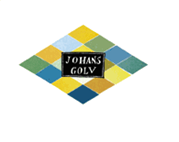 |
SOFT CONCRETE |
|
Instructions for setting Drop Standard pattern
The standard pattern of Drop is shown in “Drop standard”. The number of rows with the sister tiles at the bottom (without indentation) can of course be varied as you like. Setting of Drop requires much more precision than setting ordinary square tiles, because if you get out of the pattern, it is extremely difficult to adjust it afterwards.
Therefore it is absolutely essential to mark a grid on the wall with millimetre precision.
The setting is based on a triangular grid as shown in “Grid”. The grid refers to the centreline between the tiles (a Drop piece covers two triangles), i.e. in the middle of the joint, which is 3 mm . Therefore the outer boundaries of the grid are 1,5 mm from the edges of the tiles, as is shown in “Detail of the lower left hand corner”.
The area to be set should be divided into rectangular squares for example as shown here or in “Drop standard”. For the standard pattern the orientations of Drop is the same within each of these inner squares, i.e. with exception for the squares forming the boundaries of the wall. The “Detail of an inner square” shows the orientations more clearly. A division of the area in this manner is essential to make the setting easier.
The setting is performed square after square and it is of utmost importance that the tiles are kept within each square as they should, since it is not possible to make adjustments afterwards.
The tiles are set with a dispersion type tile adhesive and then the joints are filled in a normal way. Depending on the choice of colour of the joint filler, different optical effects are achieved.
Borders and medallions
Examples of different patterns for borders and medallions are shown in “Drop border A-J”, “Drop border K-R” and “Drop medallions S-V”. Setting of these patterns is done basically in the same way as for the standard pattern but the risk of getting it wrong is not as great since these patterns are more limited in size. Note that some of the patterns have the grid oriented at 90 degree angle compared to the standard pattern; i.e. the 100 mm spacing is oriented horizontally rather than vertically.
Make your own pattern
If you want to make your own pattern, please use the triangular net shown in “Drop GRID A4” or “Drop GRID A3”. Print the one that fits your printer best. Print the sheet of models to get a set of the different components (Drop, sister tiles and the different adjustment pieces). The components could be cut out and fitted into the triangular grid to make your own pattern.
If you have the software "Illustrator", you can do the same operation in your computer using “Drop building blocks”.
How to calculate the number of pieces needed
Having chosen your pattern, please find out the number of pieces needed of each type of tile. Find the number and measurement of each tile here. For the parts of the pattern that only contains the rombic tiles (nr 1 and 2) 115 pieces are needed per m2 . For the amount of adjustment tiles please refer to your pattern.
Back to drop If you have any questions about the setting, please contact Gunnar Johnsson at telephone +4670 776 33 80.
Johans Golv AB Tel +468 753 06 14 |